Do you know how happy your customers are with your products, services and their overall experience with your company?
If your answer is “no” or “I’m not sure,” then you need to take action and figure it out.
Measuring customer satisfaction can show you where your business is getting it right and where you’re struggling to meet people’s expectations..
If your customer satisfaction levels are low, you should quickly learn why and look for resolutions.
On the other hand, high customer satisfaction indicates that customers are enjoying their experience with your company.
Did you know?
- The probability of selling to an existing, satisfied customer is 60-70 percent (while the probability of converting a new customer is 5-20 percent).
- Over 33% of customers would consider switching due to unsatisfactory customer service.
- After a satisfactory customer experience, 69 percent of people would recommend the business to others, and 50 percent would use the company more frequently.
Due to the potential effects it has for your company, it’s critical for you to understand what customer satisfaction is and why it is important for your business.
So, in this article, we break down the basic definition of the concept and look at some of the key reasons to start measuring customer satisfaction.
You’ll also learn about:
- What differentiates customer satisfaction from customer loyalty
- The most popular customer satisfaction metrics out there
- How to improve customer satisfaction for your business
Let’s jump in, shall we?
Post Contents



What Is Customer Satisfaction?
Put simply, customer satisfaction is how satisfied people are with the quality of the product and service they get from your business.
You measure satisfaction by conducting surveys that ask customers to rate their engagement or interaction with your business on a five-point scale.
→ Click Here to Launch Your Online Business with Shopify
The customer satisfaction questionnaire used for these surveys usually asks people to pick answers between “highly satisfied” and “highly unsatisfied.”
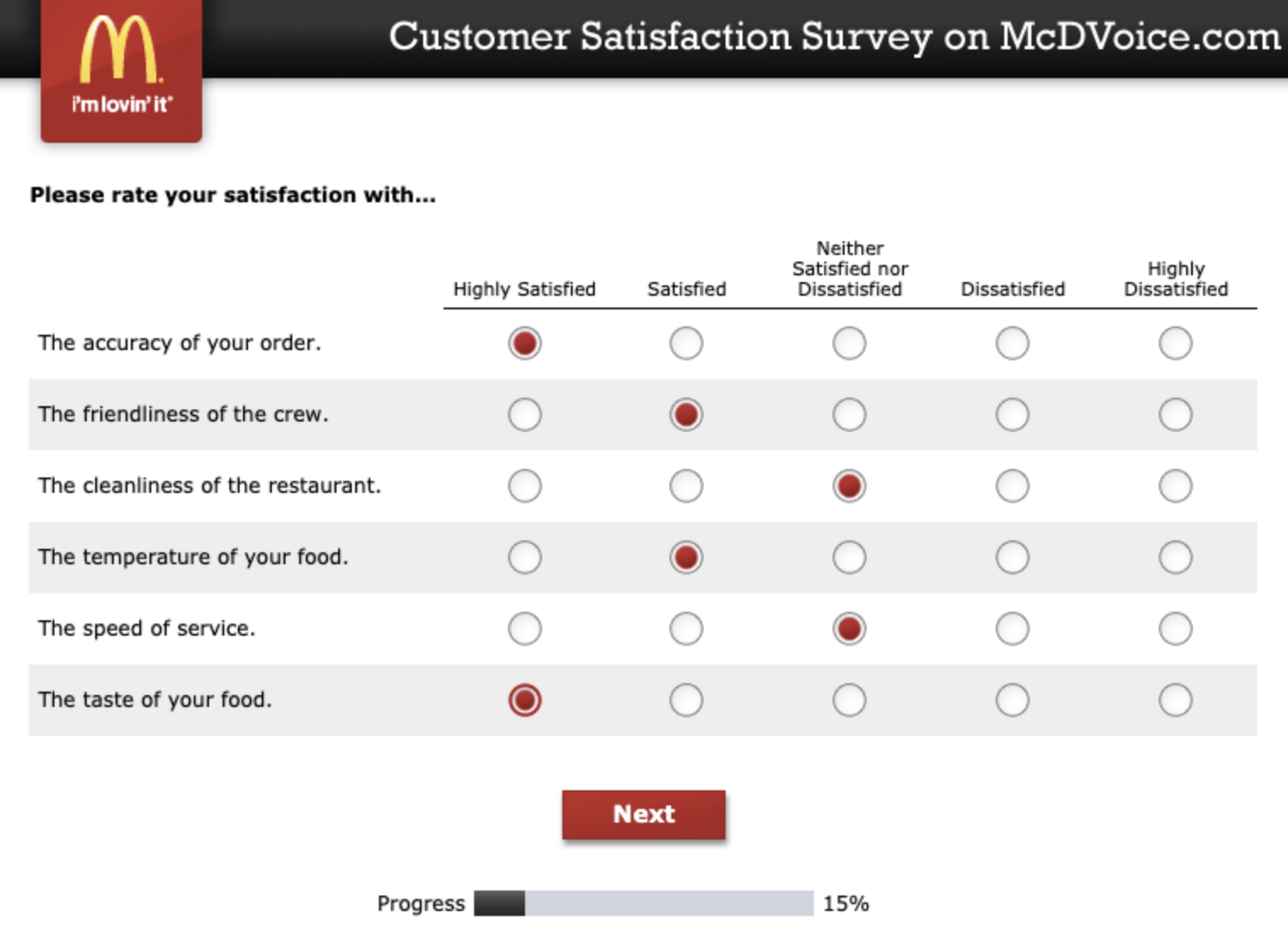
The results of the survey can give you an idea of your company’s health.
If your product or service has shortcomings, it’ll be reflected in your customer satisfaction score.
Likewise, people’s approval of your offerings, pricing, etc., will be reflected through a positive score – along with increased customer retention and referral rates.
What differentiates customer satisfaction from customer loyalty?
Customer satisfaction looks at how customers feel about your offerings at a given point in time.
Customer loyalty, in contrast, measures their involvement with your company over the long term.
The former is driven by customer service and brand experiences, and you have to keep those experiences positive.
6 Reasons Why Customer Satisfaction Is Important
Customer satisfaction can be a game-changer for your business, and here’s why:
1. It helps you make smarter marketing decisions.
Customer satisfaction can take the mystery out of your marketing spend.
For example, customer satisfaction surveys can help you see which products are a hit with your customers.
Plus, you can use surveys to learn which communication channels customers actually prefer.
Insights like these clear up your vision, enabling you to make profitable marketing decisions.
2. It makes you stand out among the competition.
Customer satisfaction can also serve as your unique selling proposition, helping you stand out in a competitive industry.
That’s because people no longer rate companies based on price or product. Instead, they evaluate the customer experience delivered by a particular business.
So, when you provide stellar customer experience, you create an environment where satisfaction levels are high.
And that serves as a core differentiator between you and your competition.
3. It prevents your customers from churning.
Churn happens when a customer decides to stop using your product or service.
Research by thinkJar found that 67 percent of people see bad experiences as a reason for churn.
Since negative experiences often result in low satisfaction levels, measuring customer satisfaction can help you identify whether or not customers are churning at a high rate.
If your customer satisfaction is low, then you can take steps to improve the overall quality of your customer experience.
Not big – but small, sincere steps like offering customers a free replacement or providing support through their channel of choice. These can work wonders for your customer satisfaction levels.

4. It prompts word-of-mouth referrals.
When customer satisfaction is high, people are much more likely to recommend your business.
According to Accenture, 55 percent of consumers showcase loyalty by recommending the companies they love to friends and family.
This can help inspire word-of-mouth referrals as 83 percent of consumers trust recommendations from their personal network more than any other form of marketing.
Satisfied customers will share company recommendations on social media, discuss them in the workplace, and even advocate for their favorite business. There’s nothing more powerful than a referral generated through a positive experience.
5. It helps you identify areas of improvement.
Keeping tabs on customer satisfaction can also help you meet changing customer needs.
For example, your customers might be interested in a newer design or layout introduced by another company in the market.
And if they feel your product’s design is outdated, they will let you know by expressing their dissatisfaction with it while sharing their preference.
Boom.
You have something to work on and improve.
6. It protects your online image.
When you track customer satisfaction on social networks, you get an overview of both negative and positive feedback and can take relevant measures to protect your brand.
For example, you can reach out to unhappy customers and explain your side of the story. Apologizing is also a part of turning around a negative experience.
Plus, you can offer to make things right and provide a timeline for when customers can expect their issue to be resolved.
Also, consider doing all of this publicly.
As in, don’t take conversations to a private inbox. Rather respond to customers’ comments in open threads so that thousands of others see that you actually care about customer satisfaction.
How to Measure Customer Satisfaction
Now that you understand what customer satisfaction is, let’s look at how it is measured. Below are the steps to measuring customer satisfaction.
1. Set a goal
It may look obvious, but the first step to measuring customer satisfaction is to set a goal.
Ask yourself: What is the purpose of this activity? What will I do with the data? If you’re making an effort, make sure you have an objective.
As an example, you can set a goal of improving the quality of customer service. The results you’ll get from the customer satisfaction questionnaire will tell you how your support team is currently performing.
If the customers are somewhat already satisfied with your team, all you may have to do is make a few adjustments (such as follow up after an issue has been resolved) to attain your goal.
2. Pick a customer satisfaction metric
After you’ve set a goal, choose from one of the following customer satisfaction metrics to evaluate customers’ opinions:
Customer Satisfaction Score (CSAT)
Customer satisfaction is usually measured via CSAT, which is the same 1-5 scale survey that we introduced at the start of this blog post.
The advantage of using this metric is that it is simple to use and to get results: people can provide answers to the customer satisfaction survey questions with just a few clicks.
To calculate the customer satisfaction score, ask customers to rate the questions using a 1-5 survey scale: How satisfied are you with [the speed of customer service, the knowledge of our team, etc.]?
Once you have the answers, divide the total number of “satisfied answers” by the total number of survey responses and multiply the value by 100.
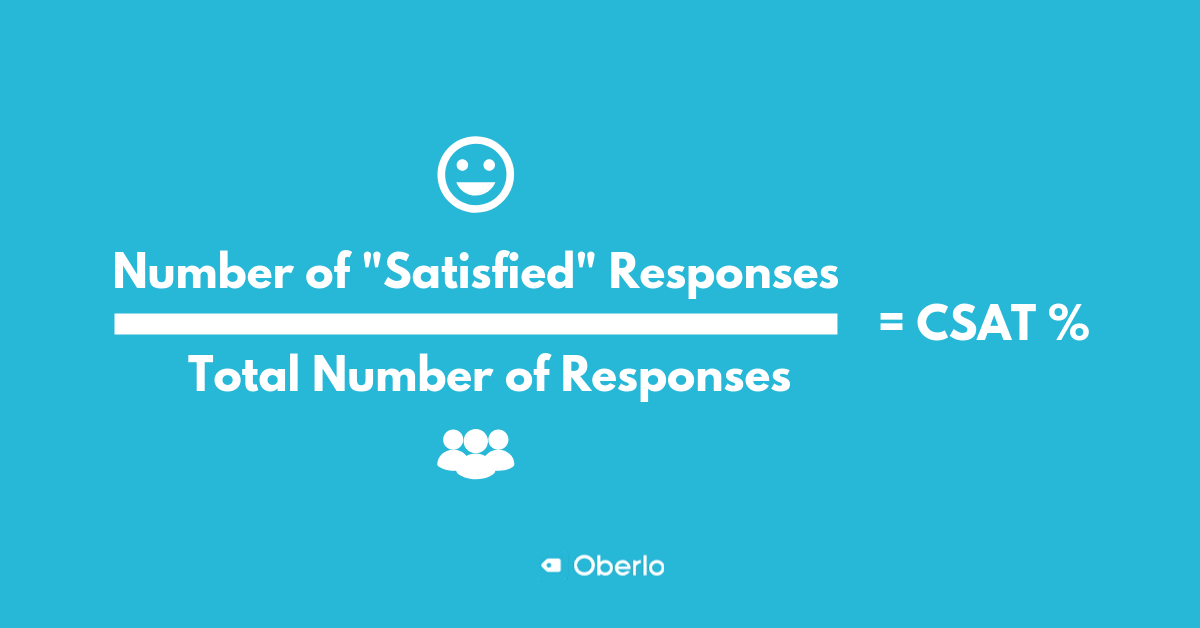
As you can see,CSAT helps to determine the average scores (expressed as a percentage) of satisfied responses.
The results generated by this method do not require a big amount of analysis, and you have the option of following up with customers to ask what could improve their customer satisfaction scores.
Net Promoter Score (NPS)
In plain language, NPS is the result you get when you survey clients with the “would you recommend” customer satisfaction questionnaire.
With the Net Promoter Score, customers have the ability to rank a company from 1 to 10, 10 being the highest customer satisfaction and 1 being the lowest.
What’s different about NPS is that it categorizes customers into three groups based on their scores: Detractors, Neutrals, and Promoters.
Customers who rate your company 0 to 6 are classified as “Detractors.” Detractors are unhappy customers that are very likely to stop giving you their business.
People who give you a 7 or 8 are “Neutrals” who can either become your advocates or switch to your competitors.
Lastly, those who choose 9 or 10 are categorized as “Promoters.” Promoters are regarded as loyal customers who are very likely to spread positive word-of-mouth about your company.
To calculate the Net Promoter Score, deduct the percent of Detractors from the percentage of Promoters.
For example, if there are 100 respondents and you get 10, 30, and 60 responses in the range of 0 to 6 (Detractors), 7 to 8 (Neutrals), and 9 to 10 (Promoters) respectively, the NPS would be as follows:
Net Promoter Score = 60/100 * 100 – 10/100*100 = 50.
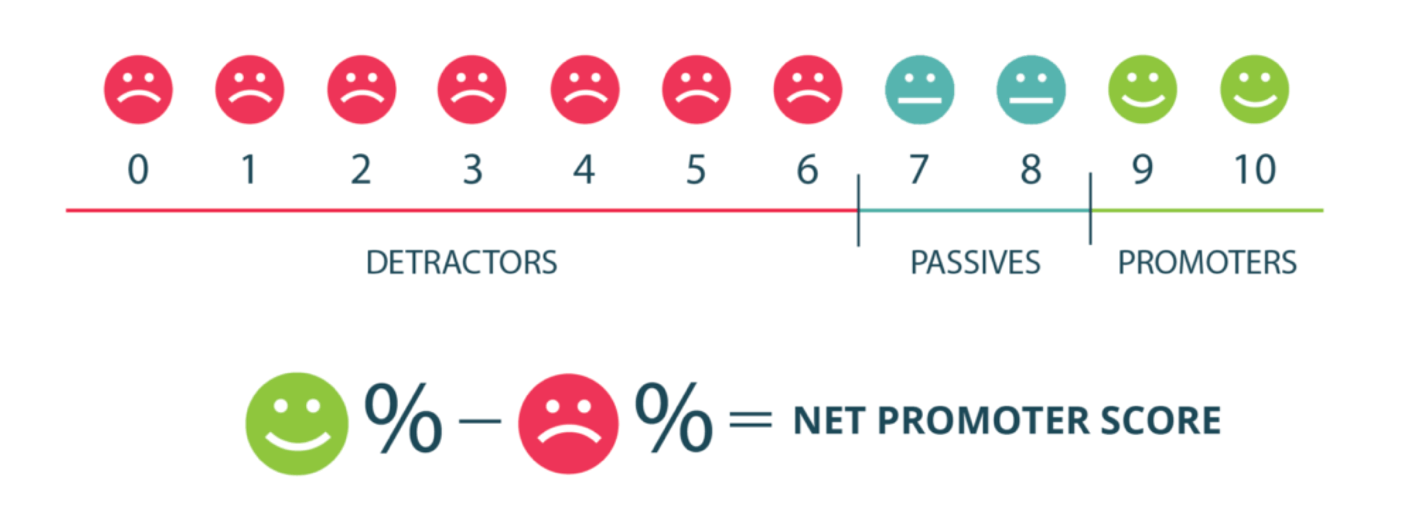
The best score you can get is +100 and the worst score you can get is -100.
The higher the NPS is, the more likely customers will recommend your business to others.
Customer Effort Score (CES)
CES follows a different route than the other customer satisfaction metrics on this list.
Essentially, CES asks customers: “how much effort did you have to make to get an issue resolved/a service provided/a question answered?”
The scale of the CES customer satisfaction questionnaire usually goes from 1 to 7, 1 implying it was extremely easy and 7 saying it was extremely difficult. After the responses have been collected, you can calculate the average CES by subtracting the percentage of easy responses from the percentage of difficult responses.
The lower the CES is, the easier it was for customers to complete a specific task.

3. Create a survey
Surveys are a handy tool for gathering information pertaining to the metrics discussed above.
You can use Google Forms or SurveyMonkey to create a good-looking survey in a matter of minutes.Both of these tools allow you to drag and drop various elements and set up multiple choice answers are needed.
Also, there are a variety of pre-made templates to choose from, some of which are already based on customer satisfaction metrics.
SurveyMonkey, for example, offers a template for Net Promoter Score. Here’s what the customer satisfaction questionnaire sample for NPS looks like:
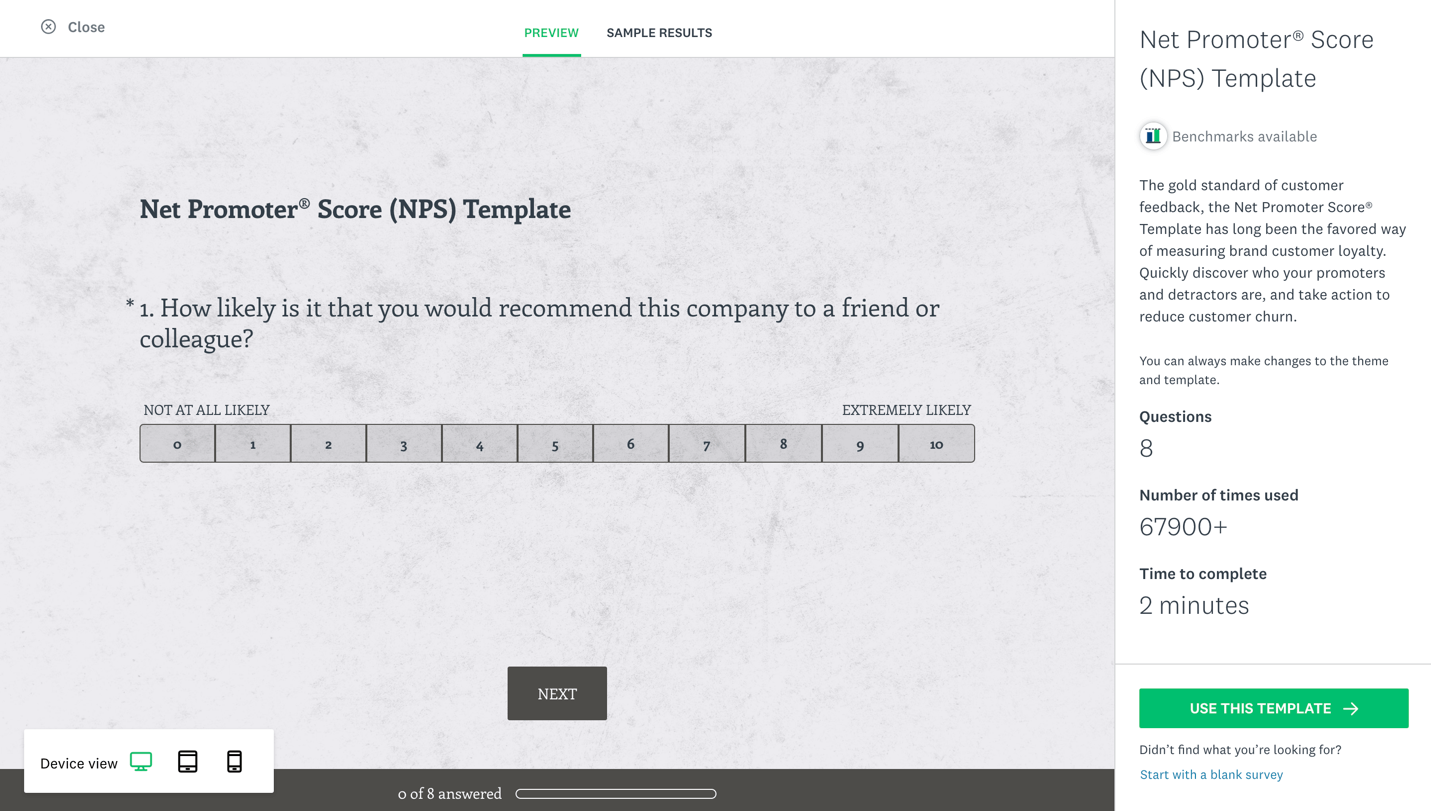
Feel free to apply the template of your choice to set up the design of your customer satisfaction survey.
Additionally, don’t go overboard with the list of questions you write for your survey. SurveyMonkey’s research revealed that respondents were likely to abandon a survey that took seven to eight minutes to complete. .
Regardless of the type of survey you’re planning to conduct, aim for a maximum of five-minute answer time and ten questions.
4. Get the timing right
The timing of the customer satisfaction survey is key.
Ideally, it should be sent immediately after an interaction with your support team, or within 24 hours, so that the conversation remains fresh in your customers’ memory.
Otherwise, they may forget how they feel.
On the other hand, surveys related to a product or service should be sent sometime after a purchase is made.
This is because it takes a while for consumers to familiarize themselves with the item or service.
While the timing varies from company to company, a good rule of thumb is to send the survey at least three days after purchase.
Companies may also send a “product improvement survey” to their customers to understand what they want in the future.
To conduct this survey, you need to provide customers with some insight into the changes you’ve made to your product, either online or in-person and then ask for their thoughts.
5. Analyze The Data and Come Up with Solutions
The data you collect won’t be beneficial unless you can use it to extract relevant insights.
So, once you get a good number of responses, look at the patterns in the data and draw conclusions.
For example, responses to a CSAT survey may help reveal bottlenecks at a certain stage of the customer journey.
If customers showcase low levels of satisfaction just after buying a product, this could indicate that their path to conversion needs to be reworked.
Likewise, responses to a CES survey may indicate issues in your customer service.
If your customer effort score is low, you should take steps like working on reducing the response time, delivering training to your customer service team and implementing convenient support channels (such as live chat on your company’s website).
In addition, you can reach out directly to specific respondents, thanking them for their feedback and apologizing for any inconveniences.
The possibilities are endless when you dive deep into the data.
Analyzing Customer Satisfaction Through Social Media
You don't always have to rely on survey responses to evaluate how satisfied customers are with your product.
Tracking what they say on social media can also help you gauge what they really think about your offering.
For example, if someone says, "The polyester is a big no for me. I'm a sweaty person." when discussing a t-shirt you sell, it indicates that they are dissatisfied with the fabric. You can now look into changing the fabric to something more summer appropriate.
Social Mention is a great tool to track all your brand mentions across social media platforms. You can use it to track the mention of your business or keywords associated with your offering.
How to Improve Customer Satisfaction
While customer satisfaction is relatively easy to measure and analyze, it is much more difficult to innovate and meet the high expectations of today’s customers.
So, instead of setting all of your hopes on automated birthday reminders, consider taking the following action steps to improve customer satisfaction.
1. Provide self-help resources
When it comes to building a customer service strategy, companies often tend to overlook the cheapest support channel: self-help resources in the form of FAQs, tutorials and knowledge bases.
According to research, 89 percent of consumers expect businesses to have an online self-service portal for customer support. So, it can be a good idea to create materials that empower customers to become more knowledgeable and better users of a product or service.
Nike, for example, offers a FAQ page to tell consumers about the differences between the many variants of Apple Watch Nike:
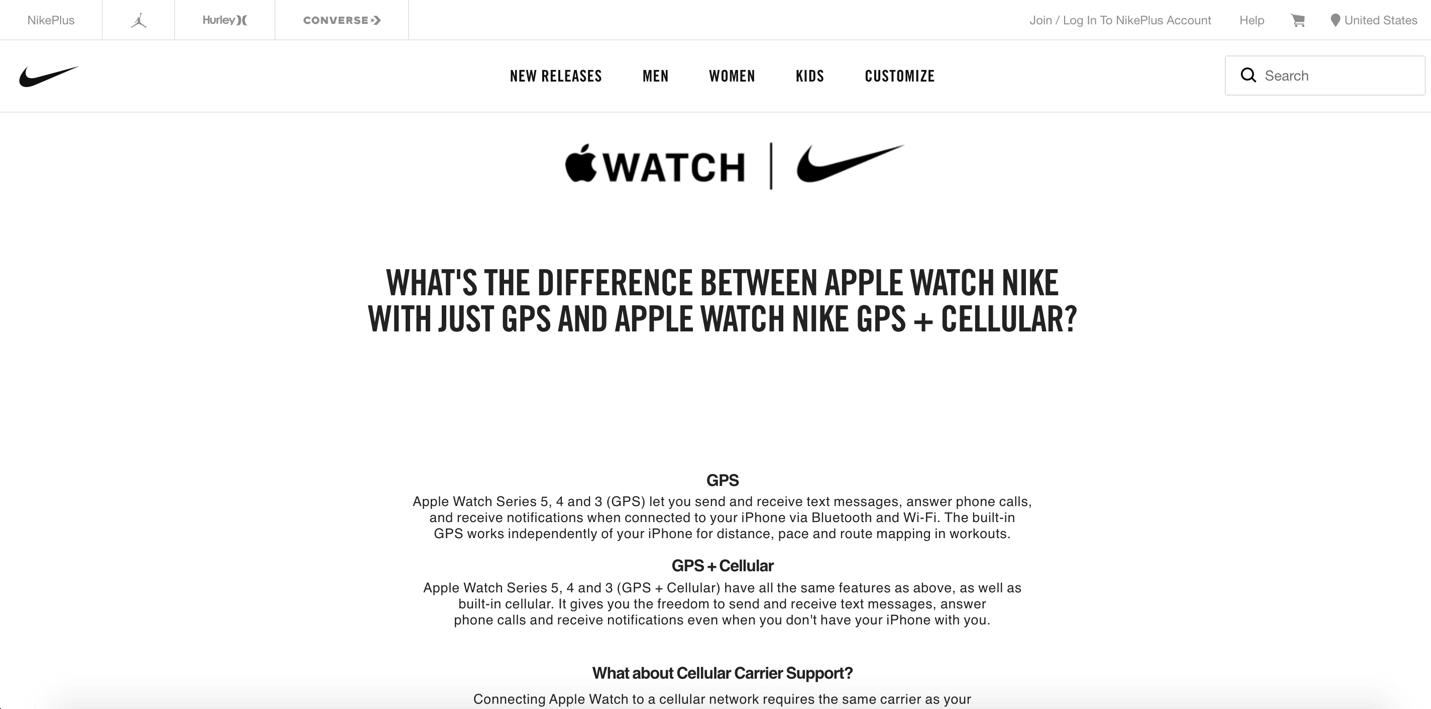
Consider building self-help resources that make it easy for consumers to find answers to their queries. This could include structured FAQs, YouTube tutorials, and more.
2. Create an omnichannel experience
Adopting an omnichannel approach is critical to supercharging your customers’ happiness in an incredibly multi-channel landscape.
One of the best ways to do this is to use the data you have on your customers (such as their email and phone number) to provide them with a seamless experience across various touchpoints.
For example, a conversation that begins on Twitter can be continued via email or SMS with all the relevant context preserved across platforms.
Going omnichannel also means sharing information about customers’ behavior and purchase history with your sales and marketing teams.
This will help them give tailored recommendations, such as special offers based on what customers have bought in the past.
Additionally, make it clear to customers that they can reach out to you on any platform whenever they require assistance.
Whether it’s social media, blogs, websites, or mobile apps, customers shouldn’t need to think twice about their choice of platform for reaching out to you.
3. Put the customer first
Never let a problem or issue overtake your customers and their needs for its importance.
For example, if a product broke down or service got mismanaged, don’t blame the customer or say that they didn’t follow the instructions in the manual.
Instead, try to meet their needs and remember that it’s the customer who’s always right.
Taco Bell, for example, told the 6000-something residents of Bethel, Alaska that they are going to open their first Taco Bell restaurant chain in the locality. However, it was an elaborate prank that left people confused and disappointed.
To rectify the situation, the brand implemented a surprise-and-delight marketing tactic, airlifting a truck to the place with 10,000 tacos. This was a wow moment for the residents of Bethel and proved customers are vital to the company.
People love companies that go the extra mile in customer service. Satisfied customers will benefit you, in many ways, and never leave when you continuously treat them well.
4. Reduce your waiting time
Waiting time is one of the key factors affecting customer satisfaction levels in business.
When people are made to wait too long to get something, it raises a red flag in their books. For example, if a product or service misses its delivery deadline, they might think the seller mishandled their order.
In a society where most people want instant gratification (or at least gratification with minimum wait), it’s important to think about ways to reduce waiting time.
That brings us full circle to the first step, providing self-help resources that enable customers to perform some functions themselves.
You can use live chat, self-service order management software, and self-service kiosks to cut down on waiting time. These solutions will empower customers to do things like viewing order detail history and tracking shipped orders…without having to wait for assistance.
5. Optimize your online experiences
When it comes to your online presence, use visual content to provide value to the customer.
You can do this by including videos that guide customers about using their new purchase, customizing the product’s functions, and more.
Improving your site’s design is another great way to improve the customer experience. Use striking visuals to draw people in, make it convenient to see more details about a product, and follow the KISS (keep it simple, silly!) principle for the overall design.
Finally, think about real-time interactions because today’s customers love them. Just having a WhatsApp chat option for queries can be a simple way to enhance customer satisfaction. Take a cue from Adidas:
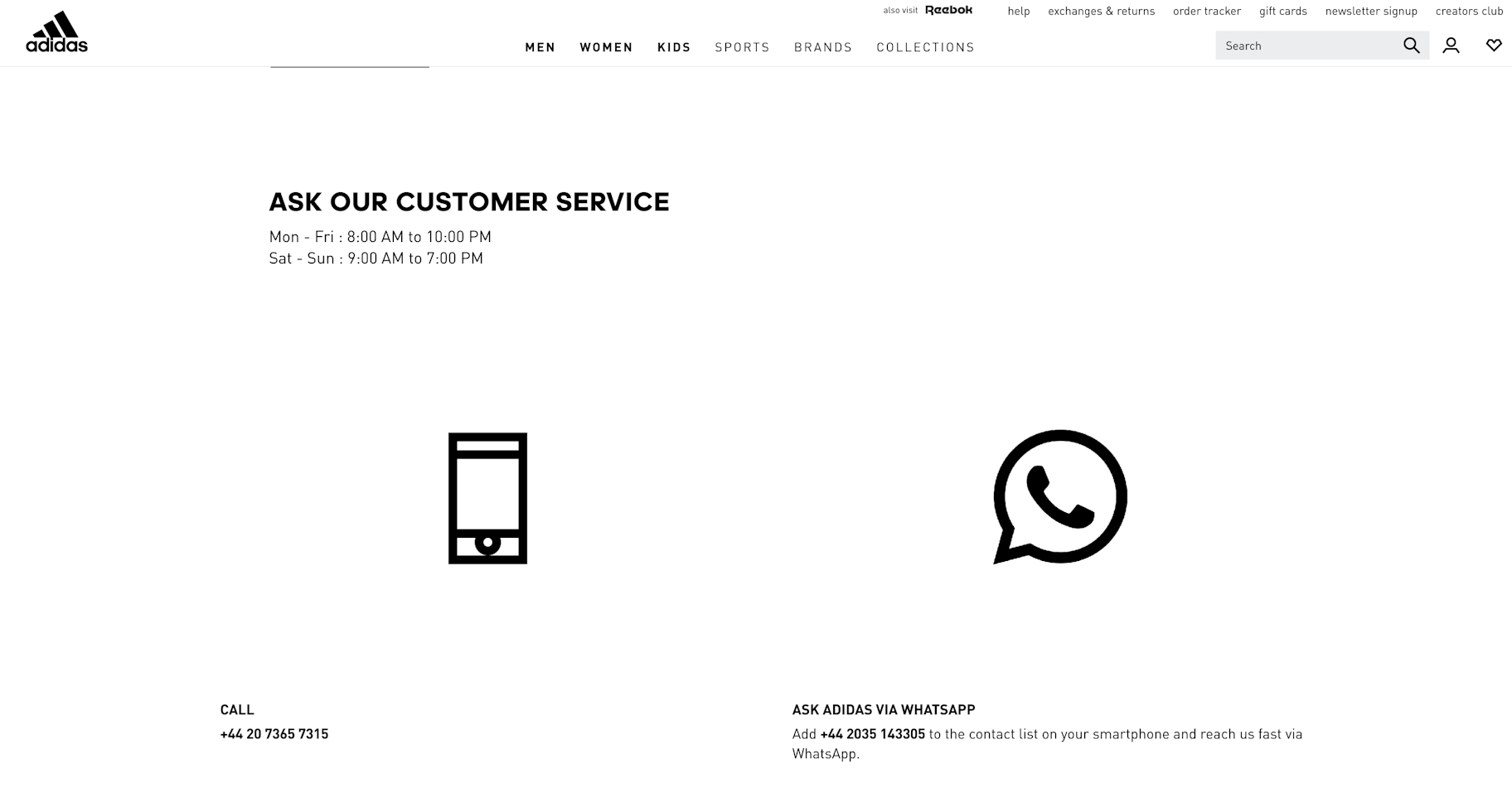
The German sportswear brand has been using WhatsApp to interact with its UK customers in real-time since 2015.
Customers can use the company’s WhatsApp hotline to have a direct conversation with an Adidas representative. It’s like talking to someone in-store for guidance or product advice.
Conclusion
Measuring customer satisfaction is the way forward for all businesses.
Since people today have so many buying choices and substitutes, you can no longer afford to ignore the importance of providing great experiences to your customers.
Identifying key demands along your customers’ journey, gathering feedback to improve or iterate their experiences, and applying trends will help you improve customer satisfaction – and subsequently generate more revenue and sales.
What steps have you taken to increase customer satisfaction? Let us know in the comments section below.






